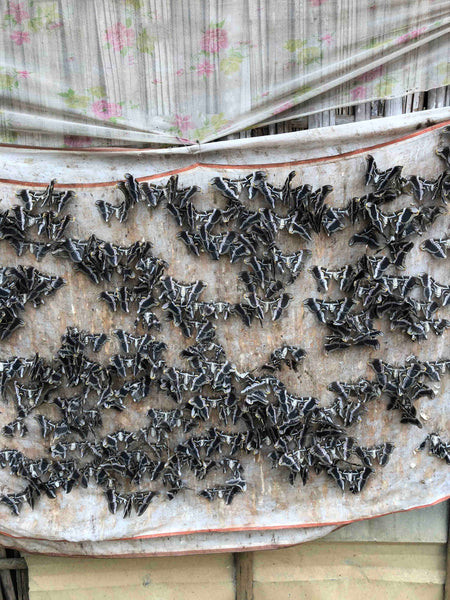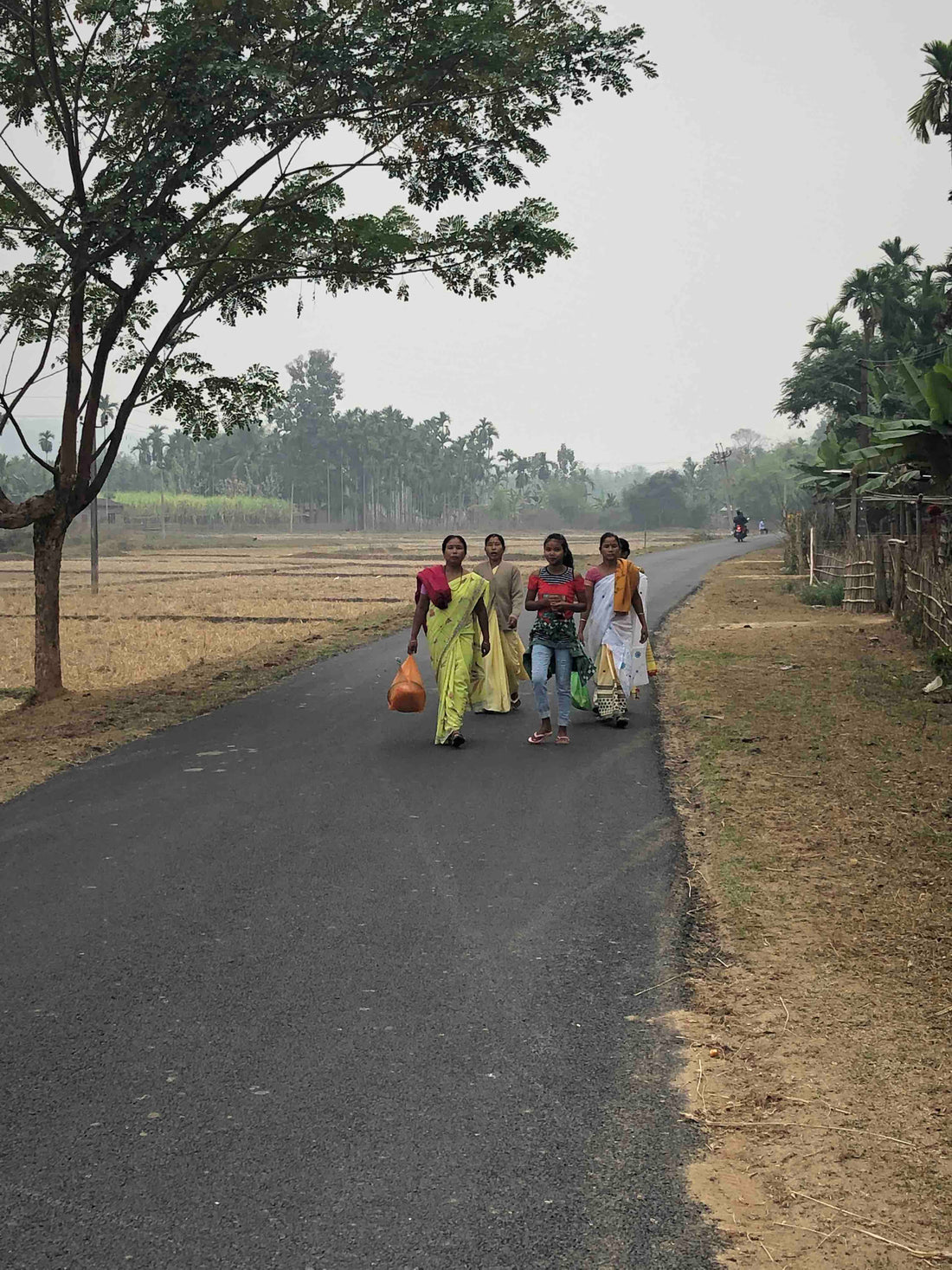A year ago, at the Delhi Trade Fair we discovered a group of artisans from Assam who were exhibiting beautiful handwoven silks and some of our favourite shibori dyed cloth so we made a plan to visit this remote corner of India in search of them. A bit of a mad plan I know – but this is really at the heart of what we do….finding unusual and beautiful textiles made by people who really care about their craft.
So finally we arrived at Guwahati airport to be met by Puberun who is passionate about reviving the ancient art of sericulture and is an expert in handwoven silk. He also runs a dyeing studio where he only uses natural dyes. He proved to be a fountain of all knowledge – or in his words the Google of North East India so we were in safe hands.
He whisked us through the outskirts of Guwahati – which like many Indian cities is pretty hard to get your head around and soon we were amongst rice paddies – stretching into the distance, dotted with cows and goats, with a few bright spots of colour as brightly clad women in the distance wound their way through the fields. The landscape is enchanting – and barely touched by the ugliness of the 21st century. The villages are mostly made up of typical Assamese houses - timbered and painted in pretty pastels with tin roofs surrounding a compound all neatly edged with bamboo fencing.

Nearly every household in this area is involved in seri culture so apart from farming their smallholdings, growing rice and vegetables each family will either rear silk worms, spin yarn, weave or dye silk. Puberun runs a co-operative with Mr Das and they work with numerous households to produce either Eerie or Murghar silk. Eerie means non-violent silk so the thread is extracted after extracting the silkworm rather than the usual method where the whole cocoon is boiled to soften it. Murghar is the King of Silks in Assam and is made using wild moths so is much more difficult to produce. The resulting cloth is a beautiful natural colour with a distinct iridescence. Murghar is used only for the most expensive and sought after sarees.
The whole process of making silk still amazes us even though we’ve seen it before. The idea that centuries ago the Chinese discovered that silk worms could produce this thread which, once spun and woven would make a fabric so beautiful, strong and versatile is astonishing. Here are some pictures of the process from pupa to loom.
These gorgeous caterpillars are the wondrous creators of the cocoons.




At Mr Das’ dyeing unit they were working with ‘Lac” – a type of bark and produces a pinkish-red through to dark crimson depending on the strength. He only works with natural dyes from the plants and minerals found locally and which have been used for centuries – turmeric for yellow, teak bark for pink and purple, onion for green, tea, iron, maribellum, Jaggery – and of course Indigo.


Indigo is the most nondescript leaf which grows easily but the process of working with indigo requires skill and artistry.
We spent the next morning with Puberun and his team of dyers practising various methods of tie-dye and – most exciting for us, Shibori. We have been producing Shibori dyed lampshades for the last couple of years and we really love the intricate, subtle patterns achieved using this technique which originated in Japan but is widely practiced amongst artisan dyers in India. It requires tightly gathering and stitching the cloth to produce a variety of random but more intricate pattern than can be achieved using traditional methods of tie-dye.

We are really excited to be incorporating some of these beautiful fabrics and techniques in our new collection of lampshades. It was a huge thrill for us to spend time with these talented craftsmen, in their homes and to witness their way of life.
Understanding how this miraculous cloth is brought to life - the skill and artistry required is a humbling experience. We hope to return soon and explore over the border into Nagaland and visit some of the remote hill tribes famed for their unique woven textiles and tribal artefacts - some of which we are also adding to our collection.


